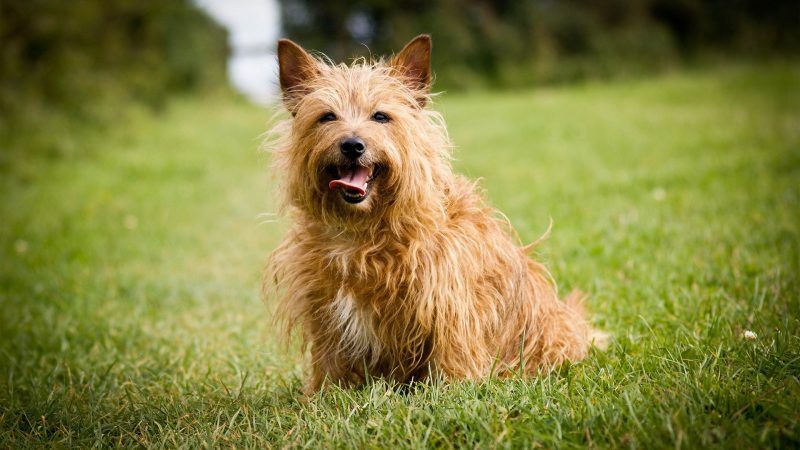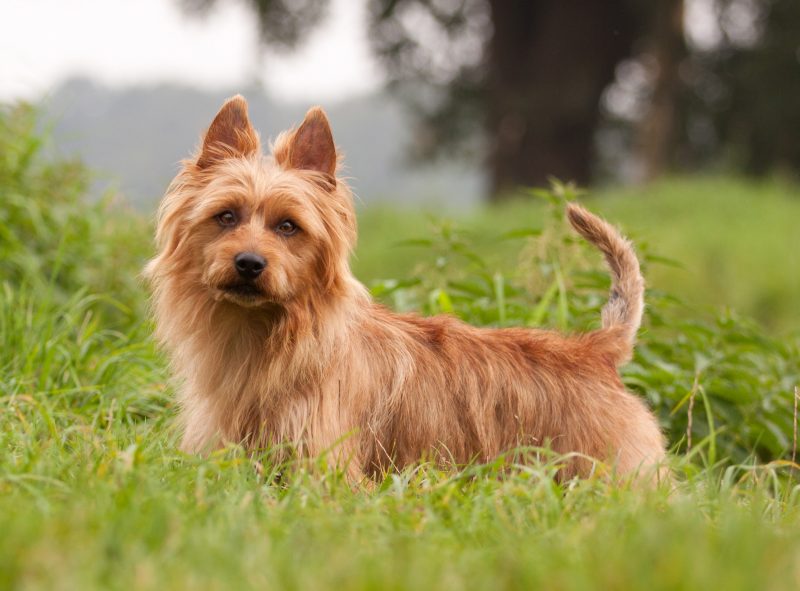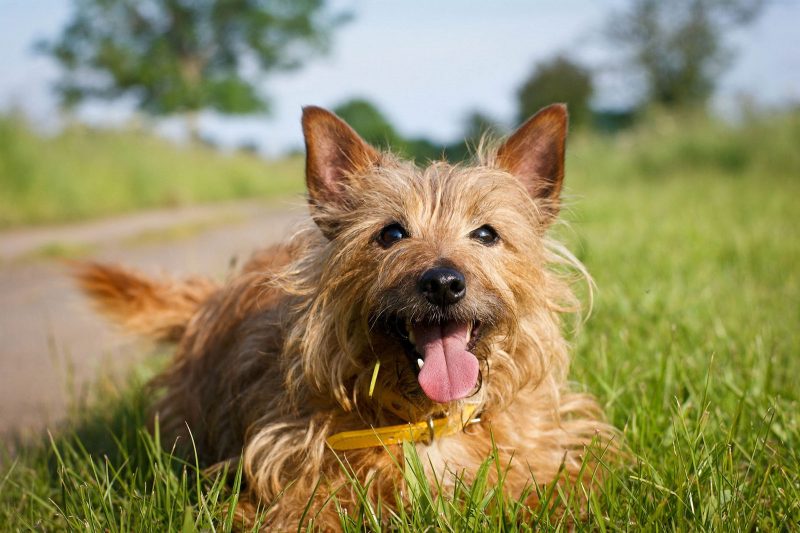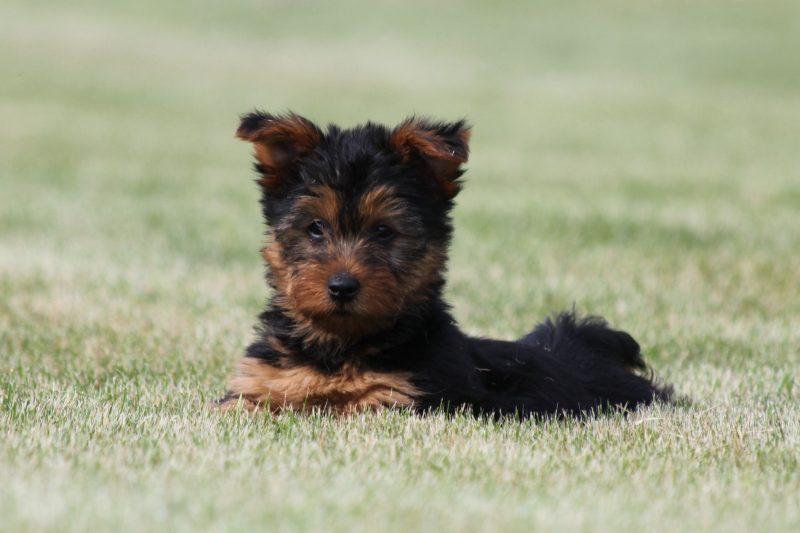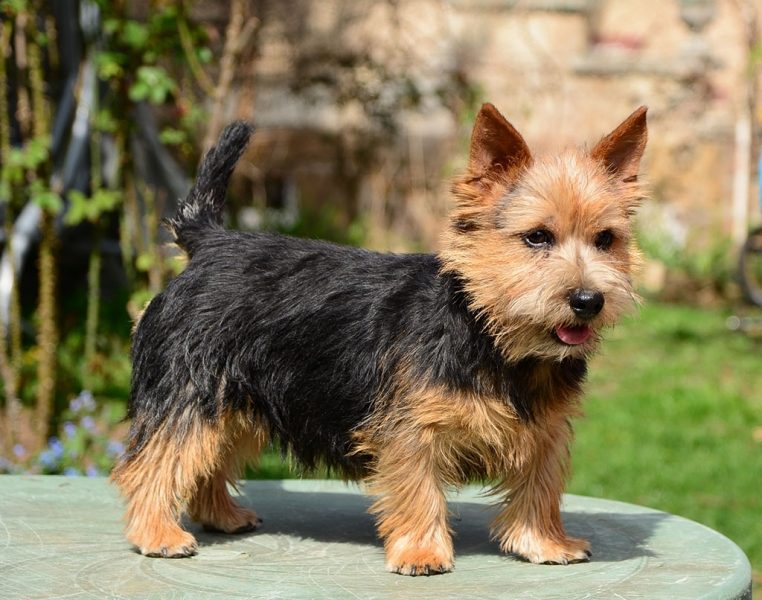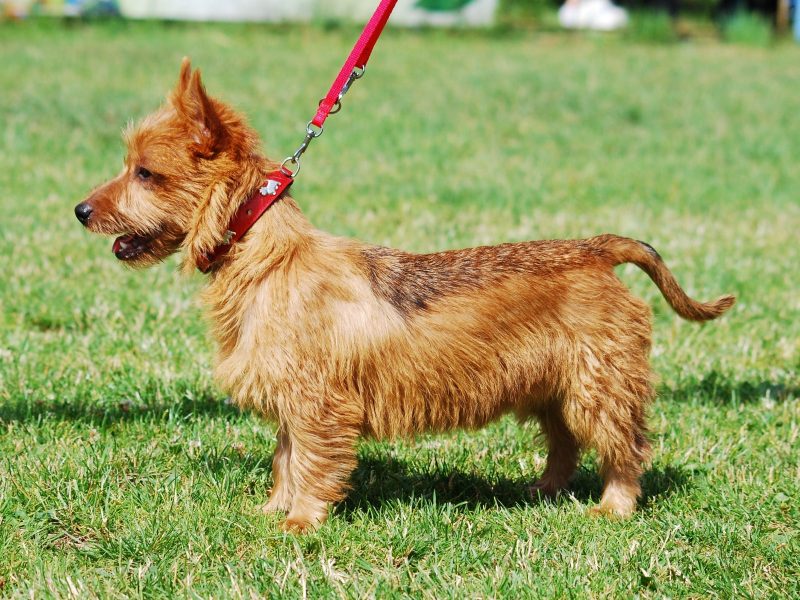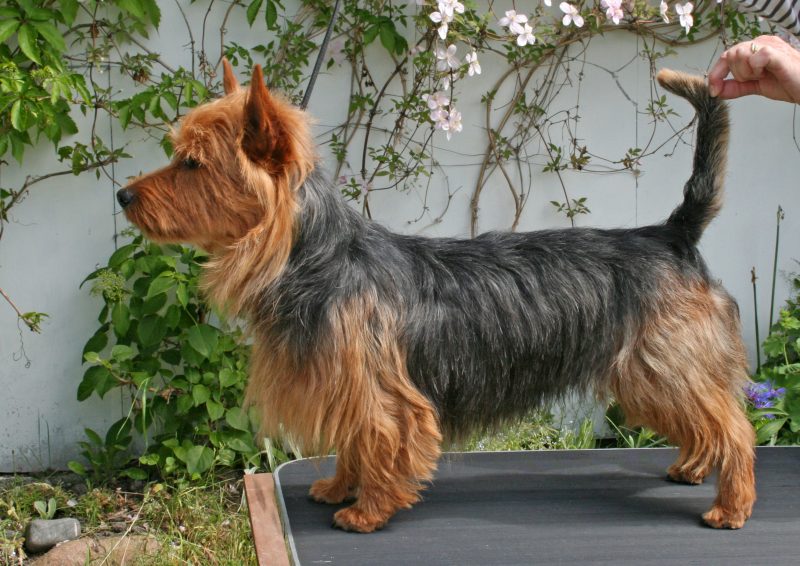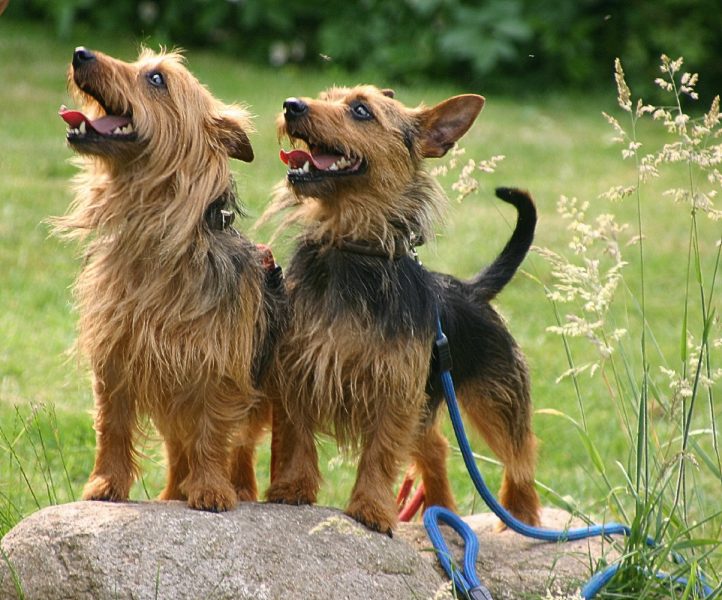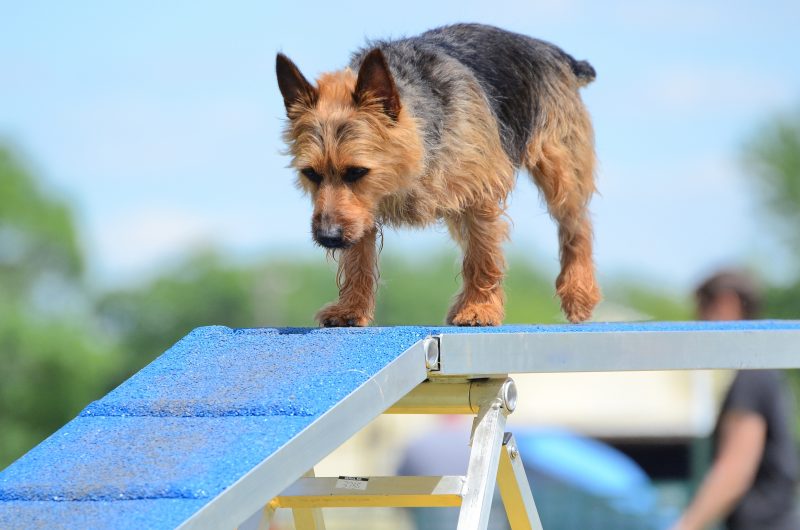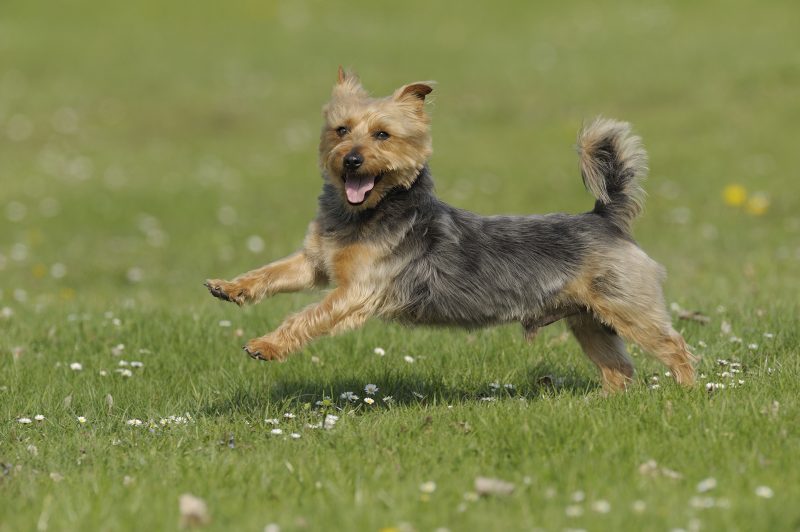National Treasure of Australia - this is the name of this breed. The Australian Terrier is very popular in its homeland. It often hosts exhibitions with his participation, and nurseries that breed species have been around for more than 100 years. In other countries, these active dogs do not enjoy such love, which is explained by their difficult character.
Material Content:
Origin history
The ancient ancestors of the Australian breed are reliably unknown. Dog handlers suggest that these are Yorkshire and Scottish Terriers. Dogs helped in hunting hares and were good rat-catchers. They have established themselves as excellent hunters. Over time, protection of the economy was added to the main responsibilities.
The first breed club appeared in Melbourne at the end of the 19th century. He brought together the owners of Yorkshire, Australian and Silky Terriers. After some time, the club split up, and a new one was created only in 1940.
Many representatives of the breed at the beginning of the twentieth century were exported to other countries. Puppies of the Australian Terrier were expensive. At home, they were highly valued for their ability to destroy poisonous snakes and large rats, which caused much harm to farmers. In 1934, one of the members of the English royal family acquired such a puppy, after which kennels appeared in England. The American Kennel Club recognized the breed in 1960.
Description of the Australian Terrier
This is one of the smallest representatives of terriers with an active and lively temperament. It has a strong, muscular body, slightly elongated. Wool semi-long, stiff with a short thick undercoat.
Smart dark eyes look wary. The dog is always ready for action, never loses watch. She loves outdoor games and various sports, eagerly runs in the mornings with the owner, and accompanies him on hiking trips.
Thanks to the thick coat and warm undercoat, it does not freeze in the cold season. Having a warmed booth, can live on the street. If the dog moves freely around the yard in a country house, there should be a reliable fence around the site without gaps. Otherwise, in pursuit of another prey, the terrier may run away from home and get lost.
Life span
Like many small dog breeds, Australian Terriers live on average up to 16 years old. They have good health, eye diseases, dislocation of the patella and diabetes mellitus can be inherited. To ensure maximum life expectancy will help good care, vaccination and preventive examinations at the veterinarian.
A young dog up to 7 years old is admitted to a specialist once a year, even if the animal is in good health. The doctor will help to adjust the feeding, identify the disease at an early stage according to the results of the tests. Inspection of individuals older than 8 years is carried out 2 times a year.
The purpose and nature of the dog
At a young age, the Australian Terrier is quite balanced, but sometimes likes to bark. The dog is very cheerful, like all representatives of this breed, contact and friendly. By nature, the dog is brave, stubborn and self-confident, can stand not only for himself, but also for his master.
This is a companion dog, and also a wonderful guard. Thanks to sharp vision and good hearing, he quickly notices strangers on his territory, and notifies everyone about the danger with a loud bark. The country house helps fight rodents and moles.
Breed standard and puppy selection
The first standard was approved in 1896, after which it was revised several times. For example, in 1962 they amended that dogs should have only erect ears. Before 2016, it was customary to stop the tail of puppies by 2/3 of the length. Now in international exhibitions only non-docked dogs can participate.
Description of the breed, standard requirements:
- growth at the withers up to 25 cm;
- weight 4-6 kg;
- elongated skull;
- black nose;
- lips are dense, black;
- strong jaws have a scissor bite;
- small brown eyes are oval;
- ears are small, sharp, erect;
- neck of medium length, slightly curved;
- strong lower back:
- moderately deep and wide chest;
- limbs strong, muscular, straight;
- movements are free, without jerking.
The coat color is sand, red, gray-blue or blue with red spots on the muzzle, lower body and legs. White and black spots in any shades are unacceptable. This does not apply to puppies whose fur on the back can be dark, almost black. They acquire a characteristic color closer to 1 year.
Puppy selection
The best kennels of Australian terriers are in their historical homeland - in Australia. In Russia, such a dog is rare, a puppy with documents can be bought from 3-4 breeders who are engaged in breeding. Nurseries are in Moscow, Tula and Perm.
There, the cost of a puppy starts from 25 thousand rubles. A dog intended for breeding or participating in exhibitions will cost more. If you are not a specialist, but want to get the best representative of the breed from the selected litter, contact the owner of the institution. Evil tongues claim that a good breeder will never give a better puppy to a layperson. Therefore, before buying, read the literature on the breed in order to inspire confidence by the seriousness of their intentions.
Maintenance, care and feeding
Australian terriers are unpretentious in leaving. For their maintenance does not require a lot of space in the house. Dogs are intelligent and devoid of aggression, but it is advisable to have experience to educate them.Pets can live both in the apartment and on the street in the aviary with a warm booth protected from drafts.
Feeding
Australian terriers rarely gain weight due to increased activity. They spend a lot of energy, and require high-quality, high-protein nutrition.
Food can be of two types - natural products and finished industrial feed. When choosing the latter, it is necessary to give preference to products of the super premium class. It contains real meat, there is no corn and bone meal, as well as food additives hazardous to health.
Making the right diet from natural foods is difficult. Approximately 70% of the daily menu should be meat - beef, rabbit, poultry. Every three days, boneless marine fish can be given. All meat and fish products must be subjected to heat or low temperature treatment to prevent infection by worms. The remaining 30% of the diet is a variety of vegetables, fruits and cereals. Useful low-fat cottage cheese, kefir, quail eggs, offal. If the dog eats natural food, vitamins must be added to it.
Hair care
The haircut of the Australian Terrier is deadly for its coat: it changes color and stops shedding. Show dogs are “plucked” or trimmed to remove dead hairs. Bathe once a month, comb out daily. You can less often arrange water procedures, for example, once a year, if the animal does not participate in exhibitions and lives in an aviary. After each walk, the paws are washed.
General hygiene
Includes ear, eye, and nail care:
- Ears are wiped with a cotton pad dipped in a special lotion that can be bought at any veterinary pharmacy.
- They monitor the condition of the eyes, washing them with clean water after a walk.
- Claws, if they do not grind themselves, are trimmed 1 time per month using special claws.
- Teeth are cleaned 2-3 times a week with dog toothpaste from a pet store or activated charcoal soaked in water. The remainder of the composition and plaque is removed with gauze wound on a finger.
Walks
To maintain good health, the dog needs daily walks and outdoor games. On the street, the terrier must not be let off the leash. The animal has a hunting instinct, so it can escape, chasing a cat or bird, and get lost.
In the conditions of a city apartment, the dog will arrange a small pogrom if he rarely and little walks. The duration of each walk should be at least 1 hour; on weekends, it is advisable to take out a pet from the country to give plenty of freedom to run.
Australian Terrier Training
Dogs are great at training, easily remember and execute commands. They can be masterful, like all terriers, but for a treat they are ready to do everything that the owner requires of them.
It should be borne in mind that hunting breeds, which can be attributed to the Australian Terrier, need early socialization and education. Close contact and understanding with the owner is very important for them. If the dog does not recognize the authority of the owner, he will be uncontrollable, and even goodies will not help in training.
There is no point in repeated repetitions of the same teams, as is done for service breeds. On the training ground, terriers should perceive training as a fun game. Classes with the owner are an opportunity to throw out an inexhaustible supply of energy and satisfy natural curiosity.
Dogs do not pass working tests at exhibitions, therefore it is not necessary to learn a special training course with them. It is enough to learn the basic orders that will help in everyday communication. The pet must understand the commands: “Place!”, “To me!”, “Fu!”, Etc.
Advantages and disadvantages of the breed
The merits of the breed include loyalty to the owner, a cheerful, playful character, tirelessness and fearlessness. The dog will be a good guard in a private house and will not eat much food, but it will help to get rid of rats and mice better than any cat.
The disadvantages of the breed include its excessive activity.The dog is suitable for sports people who like walking. Inactive sedentary, he can deliver some grief.
The Australian Terrier is a wonderful and cheerful friend whose loyalty always remains unchanged. He will test your patience and willpower to convince you that you are the best master in the world.


